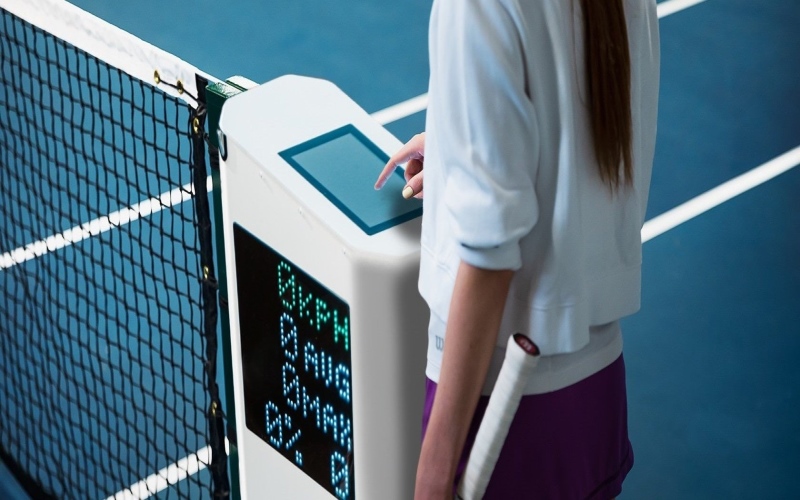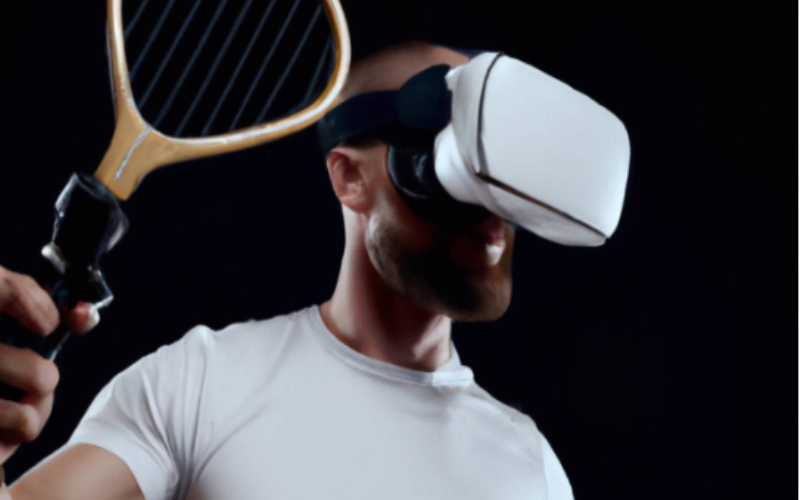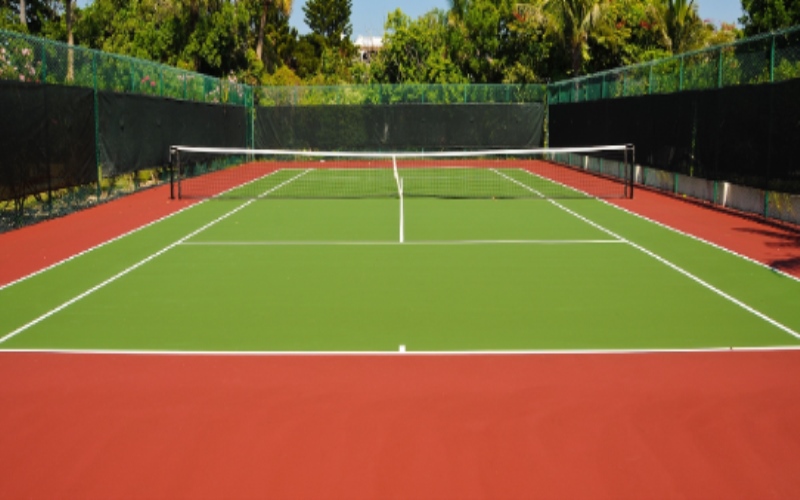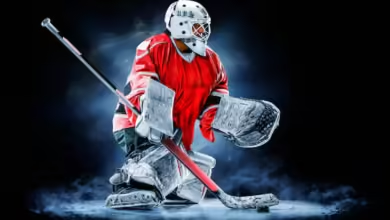Tennis and The Latest Technologies
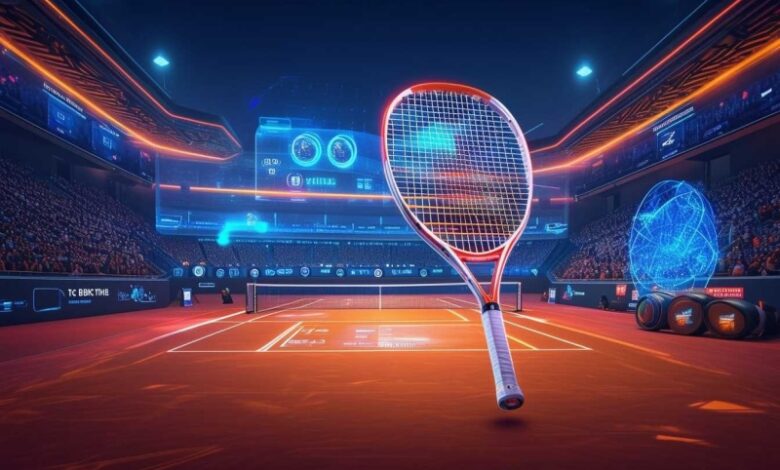
Tennis is one of the most innovative sports today. It gathers the modernity of different technologies to ensure the high accuracy of the game, convenience for players, and top-notch conditions for viewers.
Let’s describe the beauties of tennis and how it achieved the status of the sports discipline with the breaking down technologies.
How Technology Is Shaping Modern Tennis
Tennis has been changing dramatically over the years, introducing new types of court surfaces, innovative racquets, string materials, and on-court technologies for accurate game tracking. As a result, no chance a score will be missed, all game statistics are easy to collect and analyse, and reading and predicting become easier. Some technologies for data collection help you to be more accurate when betting on tennis. So, if you are interested in the mechanics of modern tennis technologies, read on!
Hawk-Eye Technology: Precision in Line Calls
Calling lines is one of the most important functions during tennis matches. Since big tournaments host players who can serve the ball with an extremely impressive speed that exceeds 200 km/h, it’s impossible to track in and out line calls without proper technologies. Hawk-Eye has been developed especially for such purposes.
From the video above, we can see that Hawk-Eye is cutting-edge technology that traces the ball’s trajectory using innovative high-speed cameras and special algorithms to ensure the high accuracy of the ball’s speed and the place where it landed. It eliminates the human factor and increases the fairness of the final game results. If there’s a conflict situation, you can always watch the replay at the high frames-per-second video.
Smart Rackets: Data-Driven Performance Enhancement
Some would argue that the rapid development of technologies for sports is good. Many would prefer to make decisions based on gut or human judgment only, but it’s hard to overestimate the usefulness of smart rackets. Modern rackets come with sensors that are mounted on handles, embedded in dampeners, and other places. Some sensors combine the racket and body mount. What’s special about these sensors, and why is the data they collect crucial? Let’s find out!
| Types of Sensors (Products, Brands) | No. of Shoots | Ball Impact Location | Swing Type | Swing Speed | Ball Spin | Power |
| Mounted on handles (Sony, Zepp Labs) | ✅ | ✅ | ✅ | ✅ | ✅ | ✅❌* |
| Embedded in handle (Babolat Play, Head Tennis Sensor) | ✅ | ✅ | ✅ | ✅❌ | ✅ | ✅❌ |
| Embedded in Dampener (Qlipp, Courtmatics) | ✅ | ✅ | ✅ | ✅ | ✅ | ✅❌ |
| Bodywear (Smash, Babolat Pop, Pivot) | ✅ | ✅❌ | ✅ | ✅❌ | ✅ | ✅ |
*✅❌– sensor availability depends on the brand
Sensors mounted or embedded on racket handles or dampeners and can be worn on body parts. They are crucial to collecting important data after or during the match, including the ball’s speed and spin, the power of your shots, and the location where the ball lands on the racket. Some sensors even demonstrate the 3D animation, angles of your shots, wrist rotations, and stroke trajectories.
Tracking the ball’s trajectory, speed, and other in-game indicators is insufficient in professional tennis. Some bodywear sensors help monitor players’ body conditions during the game, checking their health status and fitness in real time.
Video Analysis Software: Breaking Down Techniques
Captures of match actions are an integral part of game analysis. Thus, the judgement is more accurate and fair to the players. It’s possible to monitor how the game goes, considering the players’ performance, tactics, and other analytical data. For all tennis nerds and professionals, video analysis is the most useful tool combined with training tools.
AI in Match Analytics and Strategy
For a more detailed analytical approach, modern courts are equipped with top-notch AI technologies that help to analyse the game aftermath. Furthermore, you can equip your own court with such an AI camera by using your smartphone. Some apps help you to shoot your match and collect statistics. Why is it helpful?
- Identify your strengths. The technology provides data on your pace, consistency, and depth.
- See the visual graphs. After the game, you will have all your actions presented in the convenient graphs that include cross-court and down-the-line forehands and backhands, average shoot speed, and shots beyond the service box.
- Collect your opponent’s stats. Get info on your opponents that you can analyse before the next game.
- Measure your progress. Compare the match days, and keep track of your progress over time.
VR and AR in Tennis Training
Tennis is a serious sport that requires years of practice. To reach your full potential, Sense Arena has created an official VR training tool. Through such technology, you can feel yourself being in famous tournaments via the VR glasses being anywhere. Check out the main types of VR training:
- Cognitive training. VR creates a realistic environment with scenarios, training cognitive functions such as quick decision-making, attention, and working memory.
- Tactical training. VR technology helps to train strategy skills, including selection of shots, correct positioning on the court, developing a game plan for future tournaments, and more.
- Visualisation training. It is easier to visualise certain competitive tennis scenarios and be ready for them. This is also known as mental imagery when you memorise the correct actions to make them at the perfect time.
Tennis Court Technology: Advancements in Surfaces and Climate Control
Surface plays a crucial role in tennis tournaments, influencing the conditions which are appropriate for the game. Nowadays, tennis has gone through technological advancements regarding the courts’s surfaces. Check out the main innovations in modern courts.
- Smart technology integrations. It correlates with the smart sensors built into the court to collect game data, including ball speed sensors, coach insights, and court current conditions.
- Court materials. Modern courts are designed with acrylic surface technologies and eco-friendly materials for sustainability purposes. Thus, it reduces the carbon footprint and ensures better conditions for players.
- Injury prevention technologies. Advanced shock absorption technologies are a common thing for contemporary courts. With their help, players are less likely to get injured falling on the ground.
- Adaptation to climate changes. This technology is a court adaptation to bad climate conditions, making the surface more suitable for the game.
Conclusion
Tennis has been developing for years, introducing top-notch technologies for better game analysis, more accurate results determination, player convenience, and better training abilities. Thus, it all helps players achieve higher personal results and makes tournaments interesting to watch for fans.


